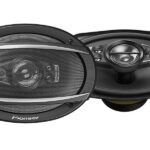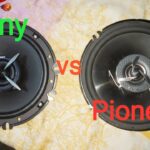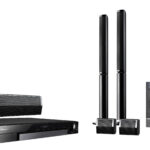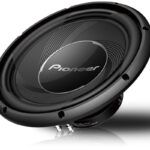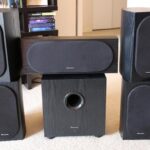Do you need help with your Bluetooth speaker? Or your speaker is not charging? How do you overcome this situation, or how do you bypass your speaker? In this post, I will teach you how to charge your speakers without using any port. And I will discuss different ways to charge without using a charging port. Stay with us to know permanent solutions Through the bypass process with confidence.
How to Bypass Charging Port on Bluetooth Speaker with Solder
First, identify the positive and negative terminals on your Bluetooth speaker’s battery. Next, prepare your soldering iron and solder. Then, connect a USB cable’s red wire to the positive terminal and black wire to the negative. Finally, secure these connections with solder. Remember, safety comes first! Always wear protective gear when soldering.
How to bypass battery on Bluetooth speaker
To bypass the battery on a Bluetooth speaker, you can disassemble the speaker and solder the charging wires directly to the circuit board. This complex process requires some electronic knowledge, so it is not recommended for beginners.
How to Bypass a USB Type Charging Port
Bypassing a USB Type Charging Port is a tricky task:
- Identify the port type.
- Get a suitable USB cable.
- Connect the device to a power source. Ensure the device is receiving power. If not, check the connections.
- Your device should be charging now.
Remember, incorrect handling can damage the device. Always proceed with caution.
Identifying and Troubleshooting Issues with the Charging Port
Before bypassing the charging port, you must identify and solve the problems with the Bluetooth speaker. The charging port is a part of your speaker. It connects to the power source through a cable adapter. Depending on the design or model, it is usually located below or behind the speaker. The charging port is essential to keeping your speaker’s battery charged and functional, but it can be prone to various issues that can prevent your speaker from charging or turning on.
Here are some problems that can affect the charging port:
Loose connections: The charging port may be disconnected from the port, adapter, or wire due to corrosion and tearing or frequent plugging and unplugging, resulting in occasional or no charging.
Damaged ports: The charging port may be damaged due to overheating. This can cause a short circuit, spark, or fire risk, likely making the port unusable and unsafe.
Faulty cables or adapters: The cable or adapter connecting to the charging port may also need to be fixed or repaired for various reasons. If it supplies insufficient power to the speaker, it has a possibility of battery damage.
Troubleshoot these issues:
- If you see any visible errors after checking, replace a new one with your speaker.
- Clean the charging port and the connectors of the wire or adapter with dry cloth or cotton. Remove dust and dirt that may interfere with the connection.
- Turn the wire or adapter lightly while plugging into the charging port. See if there has been any change in the charging status or indicator light.
- Use a different power source or outlet. See if there has been any change in charging speed or quality.
If none of these steps work, you’ll need to bypass the charging port completely and use an alternative method to charge your speaker. Bypassing the charging port means connecting your speaker directly to the power source without using the port. This can be done by wire soldering at certain points on the speaker board, USB cables, ports, or other alternative charging methods.
Fixing or Replacing the Charging Port on a Speaker
Before deciding to bypass it, consider fixing or replacing it. A faulty charging port can increase and restore the normal functionality of your speaker and save it from the potential risks and hassles associated with bypassing it.
Two main options for fixing or replacing a charging port
DIY Repair: If you have some basic skills and equipment for soldering and electronics repair, you can try fixing or replacing the charging port yourself. You must open your speaker case, identify and remove the damaged port, and add a new solder. Everything has to be put together again. If you need help understanding, you can watch online tutorials and videos on how to do this step by step for different models of speakers.
Professional assistance: If you are not confident or comfortable with DIY repairs, you can seek the help of an experienced person or a professional repair shop employee. They will have the skills and tools to safely and efficiently fix or replace your charging port. However, this alternative approach may cost you more money and time than your DIY repair.
How to fix the charging port on the Bluetooth speaker
There are several ways to fix the charging port on a Bluetooth speaker, depending on the type and amount of damage. Some possible solutions are to tighten the port, clean it up, return it to the circuit board, or replace it with a new one. If none of these solutions work, you must replace the battery or add a new speaker.
How can I charge my Bluetooth speaker if my charging port is broken?
If your Bluetooth speaker’s charging port is broken, there are a few options you can try to charge it.
- One is to use wireless charging pads. These pads use electromagnetic fields to transfer power from the pad to your device. Making it a solution for damaged charger ports. Just place your speaker on the charging pad and let it power up!
- Another option is to repair the damaged charging port. There are many tutorials available online that can guide you through the process of repairing or replacing a damaged charging port on your Bluetooth speaker. If you need more time to repair the port, you can also take your speaker to a professional repair service. No matter which option you choose. Even if the charging port is broken, there is a way to charge your Bluetooth speaker.
What to do when the charging port is broken?
If the charging port on your speaker is damaged, you will need to re-solder it on the circuit board or replace it with a new one. This requires technical skills and tools (e.g., a soldering iron, a multimeter, a replacement port, etc.). Some video tutorials and articles are available online to learn how to do this. Otherwise, you can take your speaker to a professional repair shop or buy a new one.
Directly Soldering Charging Wires to the Speaker Board
One of the most common and effective methods of bypassing the charging port on your Bluetooth speaker is to solder charging wires to the speaker board directly. Soldering is joining two metal parts by melting a filler called solder. By soldering wires onto specific points on the speaker board, you can create a direct connection between your speaker and a power source without using the charging port.
To solder wires onto your speaker board, you will need some tools and materials such as:
- Soldering
- Iron solder
- wire stripper
- wire cutter:
- Multimeter:
- heat shrink tubing
- tape or glue
To solder wires onto your speaker board, you will need to follow these steps:
- Open the speaker case and find the speaker board.
- Remove the charging port from the board, noting the positive and negative terminals.
- Strip insulation from two wires for positive and negative connections.
- Solder each wire to the corresponding terminal on the board, checking with a multimeter.
- Cover soldered joints with heat shrink tubing and apply heat.
- Secure and insulate the wires and board with tape or glue.
- Reassemble the speaker case, ensuring space for wires to exit.
- Connect wires to a power source, matching polarity. Your speaker should now work without the charging port.
Utilizing USB Cable and Ports for Charging
Another method of bypassing the charging port on your Bluetooth speaker is to utilize USB cables and ports as an alternative way to charge your speaker. USB stands for Universal Serial Bus, a standard for connecting devices and transferring data. USB cables and ports are widely used for many devices such as phones, tablets, laptops, cameras, etc. They can also be used for charging devices by providing a power supply from one device to another.
Power Source Requirements for Bluetooth Speakers
When it comes to Bluetooth speakers, understanding power source requirements is crucial. These speakers always need power from an AC adapter or internal batteries.
Selecting an appropriate power source involves considering voltage, amperage, and wattage. The power supply should match the speaker’s safe and effective operation requirements.
Compatibility between the power source and the speaker is vital. Mismatched power sources can lead to underperformance or even damage. So, always ensure compatibility for optimal speaker performance.
How long does a Bluetooth speaker battery last?
The battery life of a Bluetooth speaker varies depending on the particular model and its manufacturer. On average, you can expect a speaker to work for between ten and twenty hours on a full charge. Smaller Bluetooth speakers may be limited to a couple of hours of usage on a full charge. For example, the Sonos Move has a quoted battery life of hours. However, the battery life can also depend on the brand of the speaker and its total capacity. It is important to note that these are average estimates, and actual battery life may vary.
Alternative Charging Methods: Car Chargers, Power Banks, and Connecting to Charging Logic
When it comes to charging your Bluetooth speaker, several alternative methods are available, including car chargers, power banks, and connecting to charging logic. Each method has its advantages and limitations. For example, car chargers are convenient for on-the-go charging but may provide less power than a power bank. Power banks offer a portable solution for charging your speaker but may require additional time to charge themselves. Connecting to charging logic can provide a reliable power source but may not be as portable as the other options. Ultimately, the best alternative charging method for you will depend on your specific needs and circumstances. Take the time to explore these options and determine the best fit for you.
Mastering the Art of Bypassing the Charging Port on a Bluetooth Speaker
Mastering the art of bypassing the charging port on a Bluetooth speaker is an intriguing endeavor. It requires a blend of advanced techniques and practical tips to achieve success. The first step is to understand the structure of your Bluetooth speaker and identify the charging port. This knowledge is crucial as it allows you to navigate the internal components easily.
However, it’s important to be aware of the potential risks associated with this process. Bypassing the charging port could damage your speaker if not done correctly. Therefore, proceeding cautiously and ensuring you’re well informed about the potential challenges is essential.
As with any skill, practice makes perfect. The more you practice bypassing the charging port, the more confident you’ll become in your ability to do so effectively. Remember, every Bluetooth speaker is different, so don’t be discouraged if your first few attempts fail.
Conclusion
Bypassing the charging port on a Bluetooth speaker is a skill that can be mastered with patience, practice and a good understanding of your device’s internal components. Remember to prioritize safety and seek professional help if you need clarification on any part of the process.

